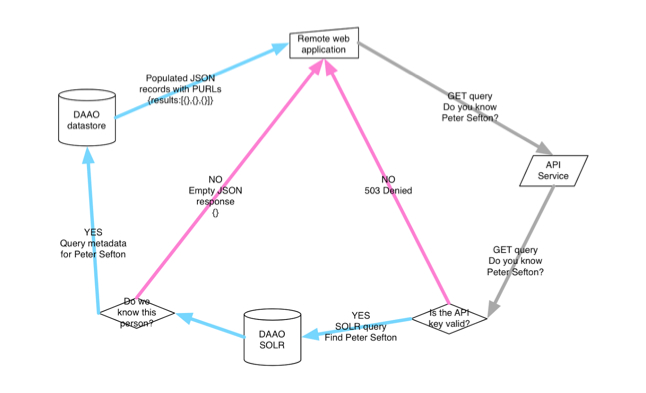DAAO interoperates with other datasets in a range of ways. This is a quick update on a couple of recent developments with fellow humanities data sets.
HuNI
Congratulations to Prof Deb Verhoeven and the whole HuNI team for launching huni.net.au in 2014.
We’ve been playing with the Collection spring visualisations (here’s an example), which is not only a means of explaining the data, but also makes the database fun to use. The usability of HuNI’s interface has inspired our planned approach to DAAO’s researcher collaboration developments. In particular, it highlights the importance of simplicity – HuNI is a complex dataset, but for a user it’s simple.
We recently added the HuNI search widget to the DAAO homepage, so now you can search the HuNI dataset from DAAO.
ADELTA
The Australian Directory of Electronic Literature and Text-based Art (ADELTA) is an interactive directory of Australian writers and writing in the New Media Arts in development at the University of Western Sydney. ADELTA engaged Holly Sydney to install a RESTful disambiguation API/service on DAAO so that ADELTA can use DAAO as a name authority service.
How does the person disambiguation service work?
ADELTA is a Works based database; DAAO is Biography based. So DAAO helps ADELTA by enabling their users to find artist records through the ADELTA interface, and ADELTA in turn helps DAAO by contributing records.

